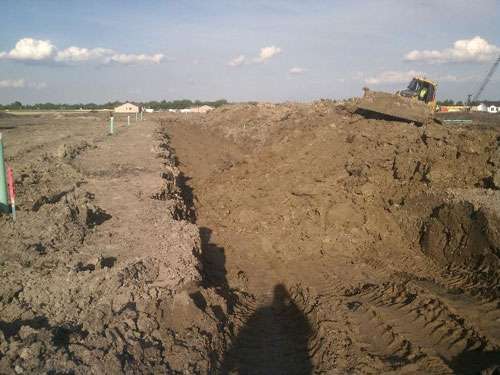
West Fargo, ND – Brooks Harbor Development & Planning
Challenge
Brooks Harbor is currently a 187-acre subdivision development master planned for residential, commercial and public properties. Construction began in 2013 and incorporated city infrastructure over several phases – water mains, sanitary sewers, storm sewers, streets, round-abouts, sidewalks, multi-use path, storm water pond, storm water lift station, etc. – in addition to the city infrastructure, multiple engagements were made with private developers working on an elementary school, church, park, water tower, office park, and veterans memorial.
Brooks Harbor is situated between the Horace Diversion and the West Fargo Diversion which required coordination with Southeast Cass Water Resource District for roads being built on the diversion and storm sewer going into the diversion.
Solution
Moore Engineering was hired by the City of West Fargo to:
- Assist West Fargo’s planning and public works departments with platting and infrastructure needs
- Assist in the creation and processing of Special Assessment Districts adhering to laws in the North Dakota Century Code
- Perform civil infrastructure design
- Inspect related construction
- Manage all construction contract administration
Moore Engineering also provided surveying, plans and specifications, bidding, project management, construction administration, construction staking, and other duties to facilitate the development design and process as a consultant, in addition to serving as the city engineer.
The storm water retention pond for Brooks Harbor was originally designed for the first two phases of the development. As the development grew, Moore Engineering recognized that excess fill was going to be required for all lots on the north half of section 19. With the future expansions it was decided to over-excavate the ponds and utilize the excavated material to fill lots closer to finish ground elevations.
Outcome
Over the course of three years Moore Engineering has master planned, designed, and inspected the transformation of Section 19 from rural fields into a cohesive neighborhood by incorporating residential, commercial, and public land development.



